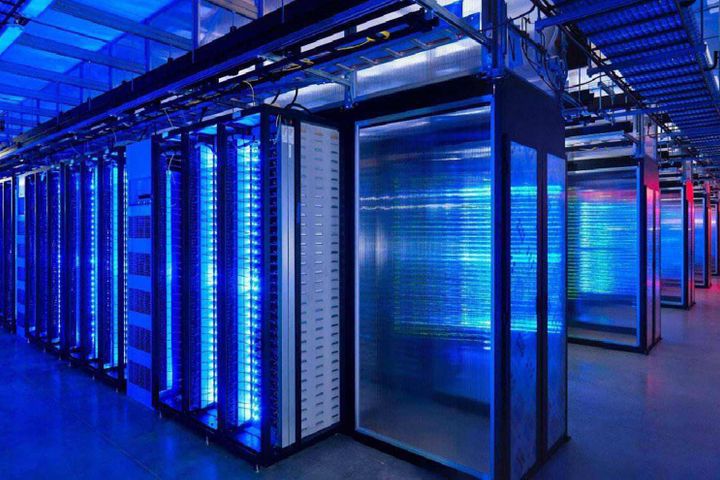 China is Home to Nearly Half of World's Most Powerful Supercomputers, TOP500 Report Finds
China is Home to Nearly Half of World's Most Powerful Supercomputers, TOP500 Report Finds(Yicai Global) Nov. 14 -- China made up close to half of all entrants in an industry-wide ranking of the world's 500 most powerful supercomputers, though the US dominated the top ten including the two fastest facilities.
Chinese represented 45 percent of entries on the list with 225 supercomputers, according to the Supercomputer TOP500 List released in Dallas. China's share has increased from 206 in the last edition of the report, published in June. Despite being more powerful in general, US supercomputers that call the US home fell to an all-time low of 109 or 22 percent of the list.
Set up in 1993 and updated every six months, the report rates supercomputers using a benchmark system called Linpack. China's Tianhe-2A Milky Way-2A, deployed at the National Supercomputer Center in Guangzhou, ranked fourth globally with a Linpack score of 61.4 petaflops. It was upgraded earlier this year by China's National University of Defense Technology (NUDT), with the older Intel Xeon Phi accelerators replaced with proprietary Matrix-2000 chips.
US supercomputer Summit at the Oak Ridge National Laboratory Summit widened its lead as the number one system, upping its High-Performance Linpack score from 122.3 to 143.5 petaflops since its debut on the previous list in June 2018. Sierra at Lawrence Livermore National Laboratory (LLNL) also added to its HPL result from six months ago, going from 71.6 to 94.6 petaflops, enough to bump it from the number three position to number two. Both are IBM-built supercomputers, powered by Power9 CPUs and Nvidia V100 GPUs.
Sierra's ascendance pushed China's Sunway TaihuLight supercomputer, installed at the National Supercomputing Center in Wuxi, into third place. Prior to last June, it had held the top position on the TOP500 list for two consecutive years with an HPL of 93 petaflops. TaihuLight was developed by China's National Research Center of Parallel Computer Engineering & Technology.
Sierra has upped its performance due to code optimization while TaihuLight uses nearly 10.65 million self-developed Sunway processors chips, so there exists a gap in performance between the two's processors, Jack Dongarra, a professor at the University of Tennessee, who worked on the list, told state-backed Xinhua News Agency.
Other facilities making up the top ten include China's Tianhe-2A, Switzerland's Piz Daint, the US' Trinity, Japan's AL Bridging Cloud Infrastructure, Germany's SuperMUC-NG as well as Titan and Sequioa, both from the US.
China Growing Presence
The rapid growth in China's share of the list is the country's biggest advantage, Dongarra said, adding that the US beats China in terms of the proportion of computing power with a ratio of 38 percent against China's 31 percent.
Chinese supercomputer makers are gaining importance globally, with four Chinese firms featuring in the world's top 10 supercomputer makers. Beijing-based Lenovo Group has increased output to 140 units since it became the world's top maker half a year ago. Jinan-based Inspur, formerly known as Langchao ranked second with an output of 84 units while Beijing-based Dawning Information Industry ranked the third with 57 units. Huawei Technologies took the eighth position with 14 units.
Lenovo produced Germany's SuperMUC-NG which made its debut in the top 10. The supercomputer at the Bavarian Academy of Sciences in Leibniz uses Lenovo's water-cooling technology, which saved 45 percent of electricity compared with air-cooled technology, the Chinese computer maker said. It is used for astrophysics, fluid dynamics, and life sciences.
Chinese Supercomputers Go Green
Dawning Information Industry's two computers also featured on the Green500 list in the top 10 most energy-efficient systems.
Chinese supercomputers first entered the top 10 of the Green500 in 2015 and 2016 but Japan, the US and Switzerland have since occupied the top 10. Japan's Shoubu system B ranks the first on the latest Green500 list while Dawning Information's Advanced Computing System ranks ninth.
The fierce competition between China and US will continue. Supercomputers outside the non-quantum computing frame still have growth potentials, Dongarra said. "It has not hit a bottleneck so we are still upgrading it."
E-grade systems capable of exascale computing, that is one quintillion calculations per second, will be the next "crown" for the field. The goal presents challenges in scale, extensions, cost, energy consumption, durability and other features for supercomputer makers. Dawning Information Industry will debut a new product at the Supercomputing18 event in Dallas, paving the way for E-grade systems. China's National Supercomputer Center in Tianjin also presented the Tianhe-3 prototype of E-grade systems at the 2nd World Intelligence Congress held in Tianjin in May this year.